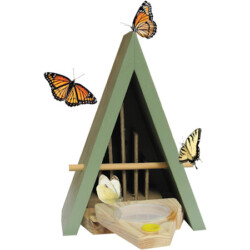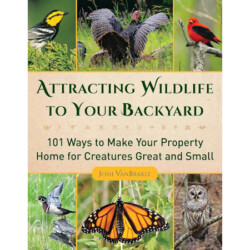Turn Your Backyard into a Certified Wildlife Habitat
Love nature and want to make a positive impact on the environment in your own backyard? The Certified Wildlife Habitat program through the National Wildlife Federation could be just what you need. This program encourages you to transform your outdoor space into a haven for wildlife, supporting biodiversity right at home. By making simple adjustments to your garden, you can attract birds, butterflies, and beneficial insects while enhancing your connection to nature.

To achieve certification, your habitat must meet four essential requirements: providing food, water, cover, and places for wildlife to raise their young. This could mean planting native plants, installing birdhouses, or adding a small water source. Not only does certification signal your commitment to the environment, but it also contributes to a larger movement of conservation efforts across the country.
Becoming certified is easy and rewarding. You can apply online and share your accomplishments with friends and neighbors, all while inspiring them to create their own wildlife-friendly spaces. Imagine the joy of watching animals thrive in a habitat you’ve nurtured! As you read further, you’ll discover more about the steps to take and the benefits of being part of this initiative.
Recommended Products:

Getting to Know the Certified Wildlife Habitat Program
The main purpose of the Certified Wildlife Habitat Program is to encourage individuals and communities to provide essential resources for wildlife. By becoming certified, you contribute to the conservation of local species while enhancing your own outdoor space. With more habitats certified, the overall health of ecosystems improves, benefiting all creatures that rely on them.
Impact on Wildlife Conservation
Becoming a Certified Wildlife Habitat not only transforms your yard but supports conservation efforts on a larger scale. Each new certification adds to a network of wildlife-friendly spaces, creating safe havens for animals in urban and suburban areas. This connectivity is crucial for species migration and survival.
Your efforts can lead to significant impacts, like improved pollination through attracting native bees. Additionally, certified habitats help mitigate habitat loss and climate change effects. Every plant you grow or birdhouse you install plays a part in nurturing a healthier environment for wildlife, making your contribution vital to conservation.

Becoming a Certified Wildlife Habitat
If you’re ready to support local wildlife, becoming a Certified Wildlife Habitat is a meaningful step. This section will detail what you need to know, including the specific requirements, the process to get certified, and the responsibilities and benefits that come afterward.
Understanding the Requirements
To qualify as a Certified Wildlife Habitat, your space must meet certain criteria. The National Wildlife Federation outlines four basic needs you’ll need to provide:
- Food: Plant native species that produce seeds, nuts, or berries. Bird feeders and water sources like birdbaths also count.
- Water: A reliable water source is crucial for wildlife, so consider ponds, birdbaths, or even small water dishes.
- Cover: This includes places for animals to hide, nest, and protect themselves from weather. Shrubs, trees, and grasses work well.
- Places to Raise Young: Your habitat should have safe nesting sites. This could include birdhouses, brush piles, or natural cavities.
Make sure your habitat is sustainable and incorporates native vegetation to truly appeal to local wildlife.

The Certification Process
Getting certified is pretty straightforward:
- Evaluate Your Space: Take a look at your current landscape and see what category needs improvement.
- Make Changes: If your habitat doesn’t yet meet all the requirements, make the necessary adjustments. Add plants, structures, or water sources as needed.
- Submit Your Application: Once you feel your habitat is ready, visit the National Wildlife Federation’s website. Fill out their online application form and pay the certification fee.
- Receive Confirmation: After review, you’ll get your certification notice. This usually takes a few weeks.
Once certified, you’ll receive a personalized certificate, and you can even purchase a yard sign to proudly display your commitment.

After Certification: Responsibilities and Benefits
After achieving certification, you’re not just done; there are ongoing responsibilities. It’s essential to maintain your habitat, ensuring food and water sources remain available throughout the year. Regularly monitor the space to keep it safe for its wildlife visitors.
The benefits, however, are rewarding. You’ll contribute positively to local ecosystems and create a thriving environment for many species. Being certified also allows you to connect with fellow wildlife advocates through community events and resources. Plus, you get access to exclusive tips from the National Wildlife Federation to keep your habitat healthy and engaging.
So, are you ready to make a difference? Visit the National Wildlife Federation website today to learn everything you need to know and get started!









